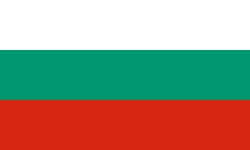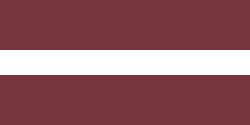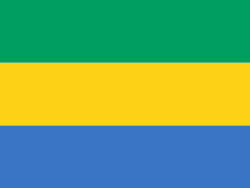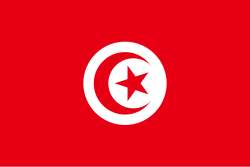Frankofonie
■ frankofonní menšiny
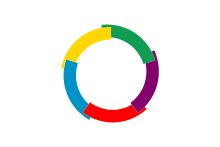
Frankofonie označuje zpravidla celek zemí užívajících francouzštinu jako prostředek k dorozumění nebo k rozvoji kultury.
Podrobnější definice frankofonie
Termín frankofonie je však mnohem širší a také vágnější, než se z této definice může zdát. Je důležité pochopit jakou část populace a jaké země vlastně pojem frankofonie sdružuje. Frankofonie sdružuje země, kde francouzština je:
- jediným oficiálním jazykem (Francie, Kongo, Monako atd.)
- jedním z oficiálních jazyků (Kanada, Švýcarsko, Čad atd.)
- mateřským jazykem velké části obyvatel (Francie, Belgie atd.)
- kulturním jazykem (Rumunsko, Maroko, Egypt, Alžírsko atd.)
- jazykem jen určité společenské vrstvy (např. Izrael)
- frekventovaným jazykem jen v určitých oblastech většího státu (USA – Louisiana, Nová Anglie)
Tyto skupiny se mohou i nemusí krýt (např. v některým zemích je francouzština sice jazykem oficiálním, není však jazykem mateřským většiny obyvatel, ani jimi není běžně používána).
Často se zaměňuje termín frankofonie s konceptem Mezinárodní organizace frankofonie. Tato organizace sdružuje země spíše z politického a ekonomického hlediska. V těchto zemích navíc nemusí být francouzština oficiálním, často ani běžně užívaným jazykem.
Historie
Termín frankofonie byl používán zeměpisci od roku 1871 pro čistě technické účely. Teprve po 2. světové válce ve zvláštním vydání časopisu Esprit (1962) byl poprvé rozvinut termín „frankofonní uvědomělosti“ (conscience francophone). Z této doby pochází dnes již zřejmě nejuznávanější vysvětlení slova frankofonie, ve které jde spíše o uvědomění si společné kultury a jazyka než o způsob, jakým jsou vedena politická nebo ekonomická rozhodnutí.
Francouzští mluvčí se v té době cítili ohroženi všudypřítomností angličtiny a celosvětového vlivu anglo-americké kultury, jež se rozmohla výrazněji po konci druhé světové války. Teprve v té době se probudilo pravé „frankofonní vědomí“ spojené s vůlí po spojení za účelem obrany francouzského jazyka.
Obrana individuality jazyka je tendencí všech kultur. Frankofonie tvoří svou rozlehlostí a vlivem výjimečnou celosvětovou snahu mnoha lidí a mnoha kultur o rozvoj francouzštiny a nejrůznějších aspektů frankofonní kultury.
20. březen je Mezinárodním dnem frankofonie
Členové frankofonie podle kontinentů

Evropa
 Belgie (vláda Francouzské komunity Belgie)
Belgie (vláda Francouzské komunity Belgie) Bulharsko
Bulharsko Francie
Francie Lucembursko
Lucembursko Moldavsko
Moldavsko Monako
Monako Rumunsko
Rumunsko Švýcarsko
Švýcarsko
Přidružení členové:
Pozorovatelské země:
Severní Amerika a Karibik
Afrika
 Benin
Benin Burkina Faso
Burkina Faso Burundi
Burundi Kamerun
Kamerun Kapverdy
Kapverdy Komory
Komory Kongo (Brazzaville)
Kongo (Brazzaville) Konžská demokratická republika (Kinshasa)
Konžská demokratická republika (Kinshasa) Pobřeží slonoviny
Pobřeží slonoviny Džibutsko
Džibutsko Egypt
Egypt Gabon
Gabon Guinea
Guinea Guinea-Bissau
Guinea-Bissau Rovníková Guinea
Rovníková Guinea Madagaskar
Madagaskar Mali
Mali Maroko
Maroko Mauricius
Mauricius Mauritánie
Mauritánie Niger
Niger Středoafrická republika
Středoafrická republika Rwanda
Rwanda Svatý Tomáš a Princův ostrov
Svatý Tomáš a Princův ostrov Senegal
Senegal Seychely
Seychely Čad
Čad Togo
Togo Tunisko
Tunisko
Asie a Oceánie
Odkazy
Související články
Externí odkazy
 Obrázky, zvuky či videa k tématu Frankofonie na Wikimedia Commons
Obrázky, zvuky či videa k tématu Frankofonie na Wikimedia Commons - (francouzsky) Mezinárodní organizace frankofonie Archivováno 24. 7. 2010 na Wayback Machine.
- (francouzsky) Mezinárodní organizace Frankofonní ekonomické fórum Archivováno 20. 4. 2018 na Wayback Machine.
- (česky)(francouzsky) Český národní výbor frankofonního ekonomického fóra
- (francouzsky) Mezivládní agentura frankofonie
- (francouzsky) Institut frankofonie
- (francouzsky) Mezinárodní organizace frankofonních starostů
- (francouzsky) Frankofonie na Wikivoyage
- (francouzsky) Veřejná frankofonní webrádia
- (francouzsky) Sdružení frankofonních webrádií
- (česky)(francouzsky) Francouzská aliance Česká republika
- (česky)(francouzsky) Institut Français de Prague
Média použitá na této stránce
This is the national flag of Belgium, according to the Official Guide to Belgian Protocol. It has a 13:15 aspect ratio, though it is rarely seen in this ratio.
Its colours are defined as Pantone black, Pantone yellow 115, and Pantone red 032; also given as CMYK 0,0,0,100; 0,8.5,79,0; and 0,94,87,0.Při zobrazení tohoto souboru lze snadno přidat orámování
Georgian flag in Pantone MS.
Vlajka České republiky. Podoba státní vlajky České republiky je definována zákonem České národní rady č. 3/1993 Sb., o státních symbolech České republiky, přijatým 17. prosince 1992 a který nabyl účinnosti 1. ledna 1993, kdy rozdělením České a Slovenské Federativní republiky vznikla samostatná Česká republika. Vlajka je popsána v § 4 takto: „Státní vlajka České republiky se skládá z horního pruhu bílého a dolního pruhu červeného, mezi něž je vsunut žerďový modrý klín do poloviny délky vlajky. Poměr šířky k její délce je 2 : 3.“
Flag of Canada introduced in 1965, using Pantone colors. This design replaced the Canadian Red Ensign design.
The flag of the Dominican Republic has a centered white cross that extends to the edges. This emblem is similar to the flag design and shows a bible, a cross of gold and 6 Dominican flags. There are branches of olive and palm around the shield and above on the ribbon is the motto "Dios,Patria!, Libertad" ("God, Country, Freedom") and to amiable freedom. The blue is said to stand for liberty, red for the fire and blood of the independence struggle and the white cross symbolized that God has not forgotten his people. "Republica Dominicana". The Dominican flag was designed by Juan Pablo Duarte, father of the national Independence of Dominican Republic. The first dominican flag was sewn by a young lady named Concepción Bona, who lived across the street of El Baluarte, monument where the patriots gathered to fight for the independence, the night of February 27th, 1844. Concepción Bona was helped by her first cousin María de Jesús Pina.
The flag of the Dominican Republic has a centered white cross that extends to the edges. This emblem is similar to the flag design and shows a bible, a cross of gold and 6 Dominican flags. There are branches of olive and palm around the shield and above on the ribbon is the motto "Dios,Patria!, Libertad" ("God, Country, Freedom") and to amiable freedom. The blue is said to stand for liberty, red for the fire and blood of the independence struggle and the white cross symbolized that God has not forgotten his people. "Republica Dominicana". The Dominican flag was designed by Juan Pablo Duarte, father of the national Independence of Dominican Republic. The first dominican flag was sewn by a young lady named Concepción Bona, who lived across the street of El Baluarte, monument where the patriots gathered to fight for the independence, the night of February 27th, 1844. Concepción Bona was helped by her first cousin María de Jesús Pina.
The national and official state flag of Haiti; arms obtained from File:Coat of arms of Haiti.svg. The civil flag can be found at here.
Flag of Burkina Faso
Flag of the Ivory Coast, written by Jon Harald Søby, modified by Zscout370. The colors match to what is reported at http://fotw.vexillum.com/flags/ci.html.
Flag of Mauritania, adopted in 2017. The National Assembly added red stripes to the top and bottom edges to represent “the blood shed by the martyrs of independence”.
Flag of Rwanda. The flag ratio is 2:3 with the stripes being 2:1:1. Colors are the following officially: Pantone 299 C 2X (blue), RAL 6029 (green), RAL 1023 (yellow) and RAL 1003 (golden yellow). (As of 03/08/2010, the only color used is the Pantone 299 C, which is from here. The rest of the colors are RAL shades from here.)
Flag of Senegal
Flag of Laos
Autor: aaker (original PNG file: https://commons.wikimedia.org/wiki/File:New-Map-Francophone_World.PNG ), Licence: CC BY-SA 4.0
The French language in the world
(Dots: cities with native transmission, typically a minority)
The following things have been changed from the old "Map-Francophone World.png":
- Vietnam, Cambodia and Laos are no longer fully colored in light blue, this is because French is not used there very much these days.
- Mauritania, Morocco, Algeria, Tunisia, Mali, Burkina Faso and the Western Togoland area of Ghana have been colored light blue, because the French language is widely used. There are even more French speakers in those countries where French is the official language.
Flag of Togo. Aspect ratio modified for projects that require an aspect ratio of 3:2.
Flag of La Francophonie. Five circular arcs of different colors symbolizing the 5 inhabited continents.
The proportions of this flag are 3:2; however, there is no official definition for the correct proportions and also 5:3 is widely used.
Flag of São Tomé and Príncipe
Map of the Francophonie

